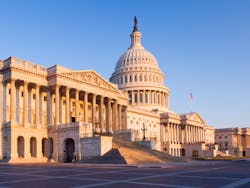The microgrid tax credit cleared the US House of Representatives in a Friday morning vote approving President Joe Biden’s Build Back Better Act (H.R. 5376).
The 30% tax credit would apply to microgrid controllers for projects that begin construction before Jan. 1, 2027.
It is part of a roughly $2 trillion plan that provides an array of boosters for clean energy, along with spending on social programs.
The bill now goes to the Senate where its fate remains uncertain.
The microgrid tax credit emerged from the MICROGRID Act, which was introduced by California Congressman Jimmy Panetta, D-Carmel Valley. As a member of the House Ways and Means Committee, Panetta secured the act’s microgrid tax provisions in the Build Back Better plan.
Following this morning’s vote, Panetta said that the tax credit will help municipalities and essential industries build and deploy microgrids. His state, California, has been particularly hard hit by power outages related to wildfires and grid issues.
“As California communities, especially those on the Central Coast, continue to experience power failures and shutoffs due to wildfires and other emergencies driven by extreme weather events, we need to make our communities more resilient. Expanding and deploying microgrids will provide a cleaner, more reliable way to keep our homes and critical infrastructure powered when the grid fails, protecting our families and keeping our businesses running,” said Panetta.
Extends solar credit, adds storage
Microgrids are included among the new technologies the bill makes eligible for a 30% investment tax credit. Others are energy storage, biogas, linear generators and dynamic glass — a form of glass used to heat and cool structures.
In addition, the Build Back Better Act extends the solar tax credit for 10 years, which would cut the cost of rooftop solar by up to 30%, according to Environment America. And it provides a tax credit for electric vehicles that would cut as much as $12,500 off EV purchases.
Other clean energy provisions provide rebates for home energy efficiency and electrification projects, create a program to reduce methane emissions and electrify US Post Office vehicles.
The various credits, such as those for solar, storage and EVs, also provide advantages for microgrids because they are common elements of a microgrid.
If the bill becomes law, it will represent the largest investment in climate change ever made by the US government, according to Environment America.
For microgrids, the bill would add to the support the technology received in the $1 trillion infrastructure bill H.R. 3684, signed into law by President Biden on Nov. 15. Known as the Bipartisan Infrastructure Deal, the bill names microgrids as eligible for funding within programs to improve transmission, electrify transportation and improve rural and remote areas of the US. Microgrids are also singled out for funding in resilience programs to help states and tribes adapt to climate disruption and for connection to transmission, transportation or telecommunications infrastructure corridors in Alaska, Hawaii or a territory of the US.
Microgrid tax credit could leverage private capital
“We’re delighted to see that microgrids are being included in the country’s strategy to move toward a clean energy future. The tax credit will help leverage private capital to help build a more resilient grid. Congressman Panetta deserves credit for having the vision to move this proposal forward and into the legislation,” said Cameron Brooks, executive director of Think Microgrid, an advocacy group and affiliate of Microgrid Knowledge.
Several other energy advocacy groups also praised House passage of Build Back Better.
“As the saying goes, we do not inherit the Earth from our ancestors, we borrow it from our children,” said Matt Casale, US PIRG environment campaigns director. “But when it comes to climate change, we’re shortchanging future generations. There’s a lot to do to fix the damage, but today we can celebrate a big step toward making amends thanks to investments in clean energy, electric vehicles and new programs to reduce methane and other greenhouse gas pollution.”
Jason Burwen, interim CEO of the US Energy Storage Association, said the bill is “the closest our country has ever come to taking action on climate change at the scale needed to create a better future. House Democrats have risen to the moment to approve legislation that would rapidly decarbonize our power system, increase the resilience of frontline communities to extreme weather, and spread jobs and prosperity through an industrial renaissance.”
Gregory Wetstone, president and CEO of the American Council on Renewable Energy, said that the plan moves the country “beyond years of on-again, off-again renewable tax credits and establishes a stable, predictable and long-term clean energy tax platform that will spur critically important investment in renewable power, energy storage and advanced grid technologies.”
Track news about the legislative progress of the microgrid tax credit. Subscribe to the free Microgrid Knowledge Newsletter.







